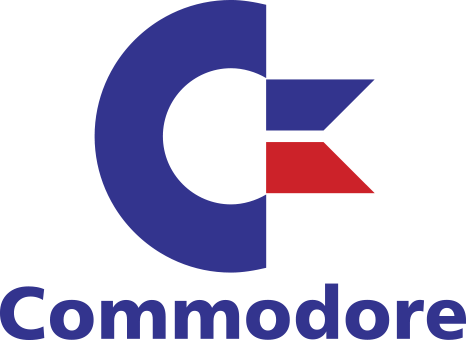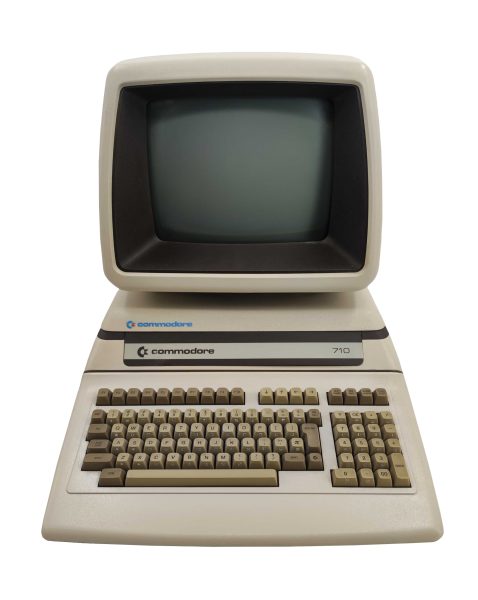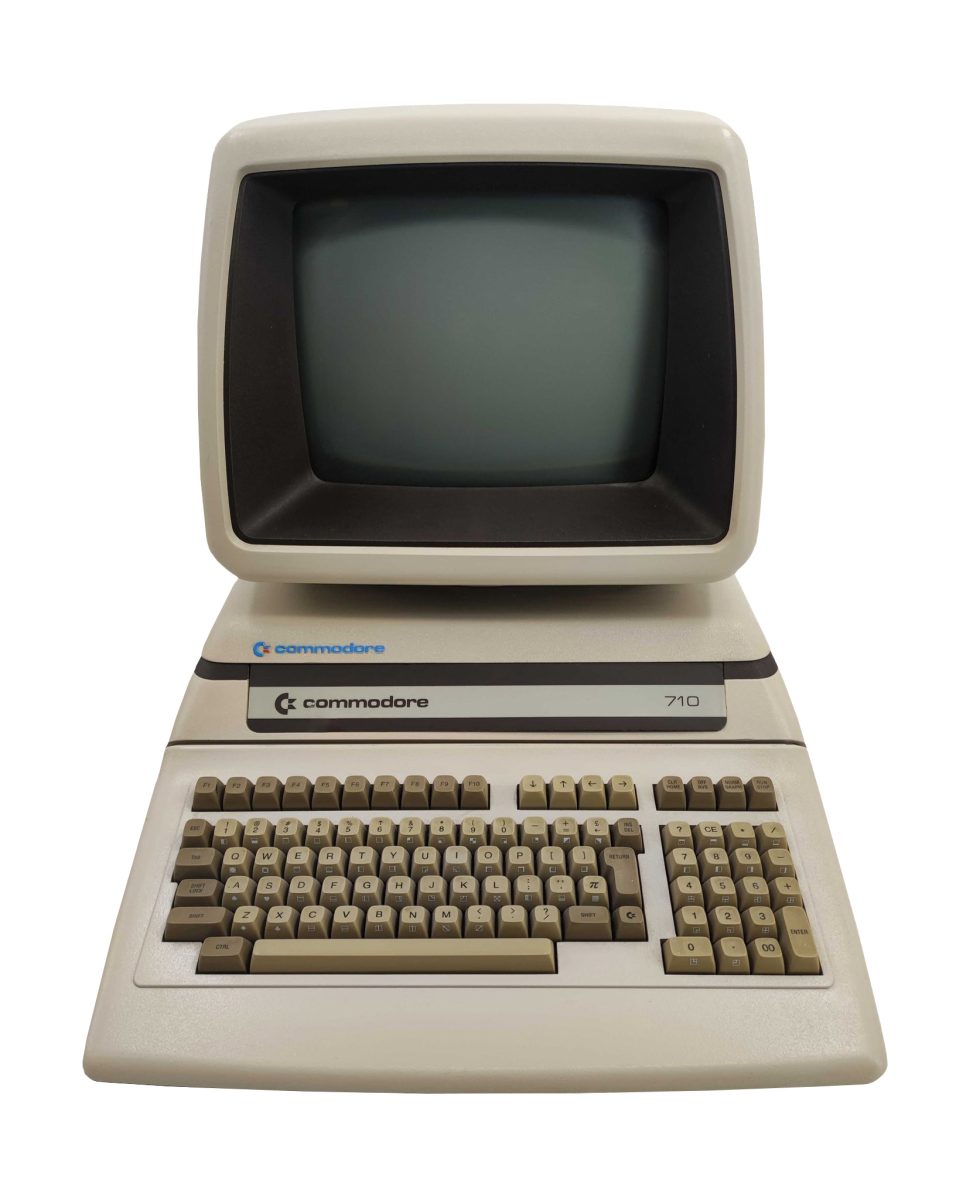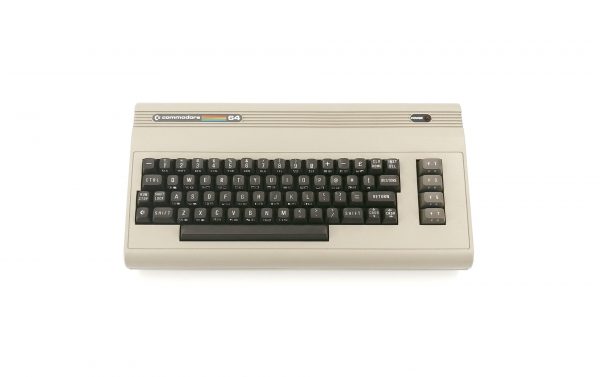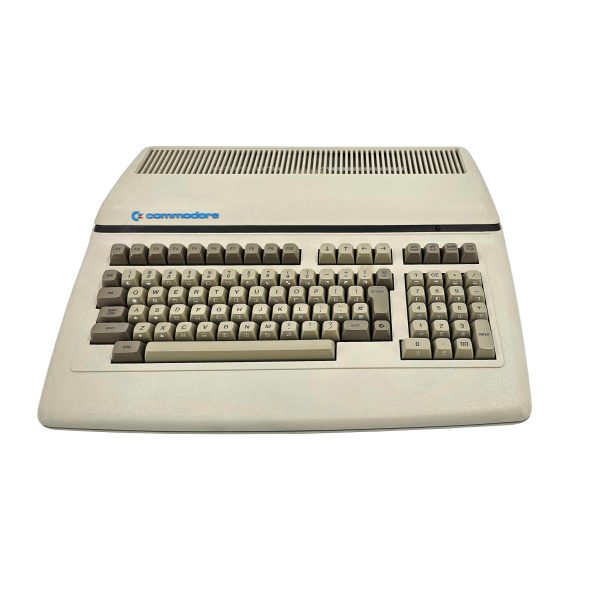Commodore 710
The Commodore CBM-II series is a short-lived range of 8-bit personal computers from Commodore Business Machines (CBM), released in 1982 and intended as a follow-on to the Commodore PET series.
Commodore 710
The Commodore CBM-II series is a short-lived range of 8-bit personal computers from Commodore Business Machines (CBM), released in 1982 and intended as a follow-on to the Commodore PET series.
The CBM-II has two incarnations, the P series (P = personal, or, home use) and the B series (B = business use). The B series was available with a built-in monochrome monitor (hi-profile) with detached keyboard, and also as a single unit with built-in keyboard but no monitor (lo-profile). These machines are often referred to as the "Porsche PETs" due to incorrect rumors that the case was designed by Porsche. Though Commodore did initially consult Porsche for a case design, it proved too expensive to produce, so Commodore enlisted designer Ira Velinski to create one based on the original PET prototype.
The P-series uses the VIC-II 40-column color video chip like the Commodore 64 (C64). It also includes two standard Atari-style joystick ports. The 6509 CPU runs at 1 MHz in the P-series due to the use of the VIC-II chip.
Both B and P-series machines have a 6581 SID chip, although the B-series' 2 MHz clock speed makes it impossible to read any of the SID's registers.
The B-series uses a 6545 CRTC video chip to give an 80-column "green screen" monochrome output more suitable for word processing and other business use than the VIC-II's 40-column display. The joystick ports are not present on the B-series, but the connector is still on the motherboard.
CBM-IIs are the only Commodore 8-bit machines with an RS-232 port instead of the standard user port. The I/O registers for the user port are still present
A cartridge slot is also included on the machines, however no known cartridge software was developed.
The B-series retained the IEEE-488 interface from the PET instead of the IEC serial interface on the VIC-20 and C64. The small amount of software Commodore developed for the B-series was distributed on 500k 8050 format disks rather than the 170k 4040/1541 format.
Features common to both the P and B-series included an MOS Technology 6509 CPU, an enhanced version of the 6502. It is capable of addressing up to 1 megabyte of RAM via bank switching (however, no CBM-II model came with more than 256 kilobytes of RAM). The sound chip is the 6581 SID, the same one that was used in the popular C64 but with some limitations as it was over-clocked to 2 MHz. Additionally, the CBM-II has an industry-standard RS-232 serial interface and an IEEE-488 parallel bus (for use by disk drives and printers) just like the PET/CBM series. The CBM-II's built-in operating system uses an enhanced version of CBM BASIC version 4.0.
Commodore had plans for a wide variety of RAM configurations as well as slimline and "high profile" models. The slimline machines were all-in-one units while the high-profile models had a separate keyboard and attached swivel-mount monitor. Both slimline and high-profile models have a connector for internal floppy drives and coprocessor boards, although only the latter have physical room in the case and a sufficient power supply for them. No production machines had internal floppy drives, however these likely would have been a half-height variant of the 8050. Most of the planned CBM-II models never made it past the prototype stage. Originally, there would be four models in each series, with memory increasing in 64 KB increments. 64k and 192k models were dropped early in development and no such models were produced.
In the end, the only CBM-II models to enter production and be sold to end users were the B128/600, B256/700, CBM-128/710, and PAL model P500s. The B128 and P500 were slimline models with no internal disk drives or attached monitor while the CBM 128 and B256 were high-profile models. The B128 was the biggest selling of the three.
The production naming within the United States and Canada was the B128/B256 and CBM128-80/CBM 256-80 while in Europe they were known as the 600 and 700 series respectively (no "B" in front of the model number). The P machine was known worldwide as the 500 series. There are prototype models though such as the B500 (earlier B128 design) and B700 (earlier CBM 128-80/CBM 256-80 design) known to exist
The rounded case design of the high-profile CBM-II series would later be used in redesigned versions of the original PET/CBM computers, (such as the 8296) that the CBM-II line was designed to replace. In addition, the memory banking scheme of the CBM-II would be reused on the Commodore 128 with a few slight modifications.
Museum Collection
| Collection | Serial code | Owner |
|---|---|---|
| Commodore 710 | WG03159 | Anja van der Plas |

